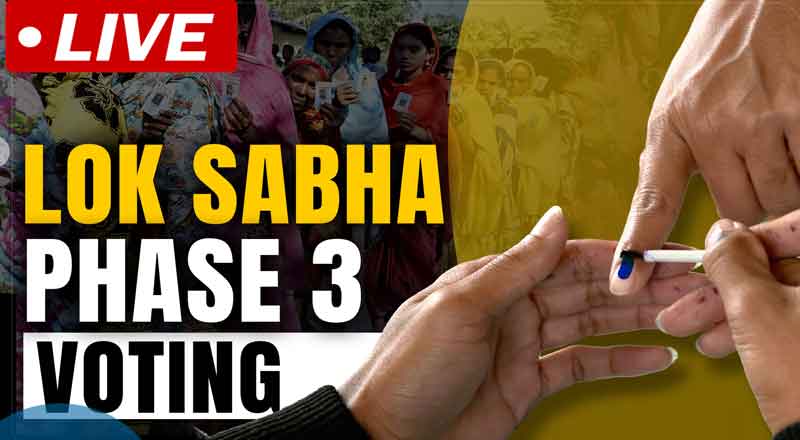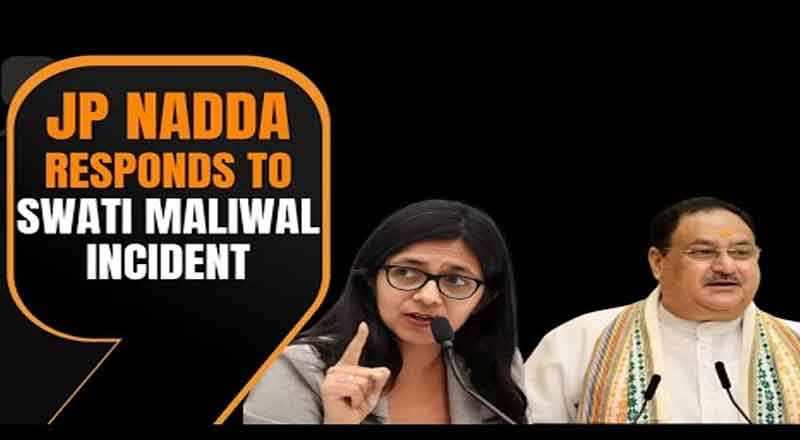Today marks a pivotal moment in India’s democratic journey as 93 constituencies spread across 11 states and a Union Territory exercise their electoral rights in the third phase of the 2024 Lok Sabha Elections. Amidst this massive electoral process, here’s a detailed exploration of the significant events, key players, and political dynamics shaping this crucial phase:
High-Profile Voters: The day began with Prime Minister Narendra Modi leading by example, casting his vote at a polling booth in Ahmedabad. His presence, along with that of Union Home Minister Amit Shah, Health Minister Mansukh Mandaviya, and Gujarat Chief Minister Bhupendra Patel, underscored the importance of citizen participation in the electoral process.
Turnout Statistics: As of 9 am, an average turnout of 10.5 percent was recorded across the constituencies, reflecting the enthusiastic engagement of citizens in shaping the future of the nation through their votes.
BJP’s Strongholds: The constituencies voting today largely encompass areas considered strongholds for the Bharatiya Janata Party (BJP). In the 2019 elections, the BJP secured victory in 72 out of the 92 seats up for grabs today, with Gujarat alone accounting for 26 seats. This dominance positions the BJP as a formidable force in these regions.
Karnataka’s Political Landscape: Despite BJP’s historical dominance in Karnataka, recent developments, including a significant scandal implicating the BJP ally Janata Dal Secular, have added an element of unpredictability to the state’s electoral dynamics. The fallout from this scandal and its impact on voter sentiment remain crucial aspects to monitor.
Maharashtra’s Intriguing Battles: Maharashtra presents an intriguing battleground with 11 seats up for grabs, notably featuring the familial clash between the Pawars in Baramati. The contest between uncle Sharad Pawar and nephew Ajit Pawar’s factions adds an interesting dimension to the electoral narrative, with both sides striving to establish dominance.
States in Focus: The states participating in the third phase include Assam, Bihar, Chhattisgarh, Goa, Gujarat, Karnataka, Madhya Pradesh, Maharashtra, Uttar Pradesh, West Bengal, and the Union Territory of Dadra and Nagar Haveli and Daman and Diu. Each state brings its unique socio-political dynamics to the electoral arena, contributing to the complexity of the electoral landscape.
Postponed Elections: Notably, the election in Jammu and Kashmir’s Anantnag-Rajouri constituency has been postponed to May 25 due to concerns raised by the BJP regarding weather conditions affecting campaigning. This postponement highlights the logistical challenges and external factors that can impact the electoral process.
Prominent Candidates: Key figures contesting in this phase include Union ministers Amit Shah from Gujarat’s Gandhinagar, Jyotiraditya Scindia from Guna, Madhya Pradesh, Pralhad Joshi from Karnataka’s Dharwad, and former Chief Minister Shivraj Singh Chouhan from Vidisha, Madhya Pradesh. Their electoral battles symbolize the clash of ideologies and political ambitions shaping the national narrative.
Opposition Contenders: Opposition members such as Samajwadi Party’s Dimple Yadav from Mainpuri in Uttar Pradesh, Congress’s Adhir Ranjan Chowdhury from Baharampur, West Bengal, and Digvijaya Singh from Rajgarh, Madhya Pradesh, are also in the electoral fray, adding to the competitive landscape. Their campaigns seek to challenge the incumbent government and offer alternative visions for the country’s future.
Upcoming Phases: With the next phase scheduled for May 13 and the final phase concluding on June 1, the political landscape of India is poised for further shifts as the country marches towards the crucial counting day on June 4. The upcoming phases will witness heightened campaigning, strategic alliances, and last-minute efforts by political parties to sway undecided voters, adding to the drama and suspense surrounding the electoral process.
This phase of the Lok Sabha Elections not only witnesses the exercise of democratic rights by millions of voters but also sets the stage for the formation of the next government, making it a momentous chapter in India’s electoral history. As citizens across the nation cast their votes, they participate in shaping the destiny of the world’s largest democracy, reaffirming the strength and vibrancy of India’s democratic institutions.
(With inputs from agencies)





